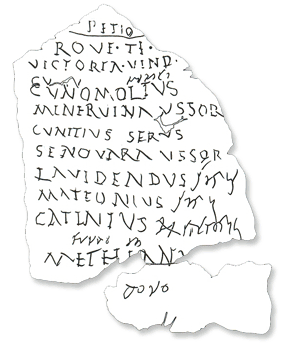The Digital Press at the University of North Dakota is excited to announce the launch of Dakota Datebook: North Dakota Stories from Prairie Publicedited by David Haeselin. Developed in collaboration with the University of North Dakota’s Writing, Editing, and Publishing program and in cooperation with Prairie Public Broadcasting, Dakota Datebook brings to the printed page some of the most memorably, inspiring, and humorous stories from Prairie Public’s iconic Dakota Datebook radio program. Download a digital copy for free from the Digital Press webpage or pre-order your copy from Prairie Public today!
![Dakota-Datebook-WRC-Draft8_Final6x9_3-01.jpg]()
On Saturday at 8 pm, The Digital Press and Prairie Public are hosting a launch part on board the Lewis and Clark Riverboat on the Missouri River in Bismarck. Various media personalities will be there, as will David Haeselin and some Dakota Datebook contributors. It should be a great time. To get tickets for the boat ride and to come and hang out with us go here.
For more on the boat, the book, and the party, check out Aaron Barth’s interview on Prairie Public’s Main Street on Monday.
![datebook2019enews2-1]()
~
A few more things from The Digital Press at the University of North Dakota.
1. Busy Year! This will be one of the busiest years yet for The Digital Press with as many as five titles queued up to hit the website over the next 8 to 12 months. Late this fall, we’ll see the arrival of Shawn Graham’s Failing Gloriously and Other Essays. Stay tuned for a sneak preview of this. A book of essays from last fall’s Digital Approaches to Teaching the Ancient Mediterranean conference at the Institute for the Study of the Ancient World at NYU and edited by Sebastian Heath should appear by year’s end as well.
In the spring, we’re looking forward to publishing Kyle Conway’s innovative edited volume, Sixty Years of Boom and Bust which juxtaposes the 1958 Williston Report with perspectives on the 21st century boom penned some 60 years later. It’s a fascinating read. There should also be volume 3 of our collaboration with the journal Epoiesen and maybe some previews from our 2020-2021 season.
2. Subscriptions? So far, The Digital Press hasn’t done much to connect personally with our readers. We’d like to change that some. I’ve been tempted to offer a subscription service of sorts through an email list that will distribute our newest publications and occasional news direct to your inbox (as the kids say). I’d run it through MailChimp or some other service that would make it easy enough to unsubscribe or to opt out. I wouldn’t share your emails with anyone (although I might be tempted to use it to plug for my other little publishing venture, North Dakota Quarterly).
3. Promoting Open Access. I’ve been thinking a good bit about the larger mission to promote open access publishing in academia. One thing that I would love to do this year is to pay more attention to open access publishing in general (whether from mainstream academic presses or from more specialized open access publishing houses). I’d love to do an “Open Access Book of the Week” that highlights some of the high quality open access work appearing these days.
I’d also like to start to build another project. It’s called Cite Open Access. It would promote citing open access scholarship across all forms of scholarly publishing. My fantasy idea involves getting various artists to design simply, legible posters that say Cite Open Access on them (and I’d urge folks to use open access fonts and it would go without saying that the posters would be free downloads). Ideally, I could get libraries, open access publishers, “fellow travelers,” and other supporters of open access scholarly work to co-sponsor various posters. I’d then distribute digital copies of these posters and encourage folks to display them prominently on their campuses. Who’s in?
4. Internet Archive. Finally, I’ve uploaded almost all the content from The Digital Press to the Internet Archive this weekend. One of the many great things about the Internet Archive is that it automatically converts our PDFs into multiple formats. The automated system isn’t perfect, but it works well enough to make our content available for text mining or ebook readers!






 00106, Upload: 19.08.2019
00106, Upload: 19.08.2019







